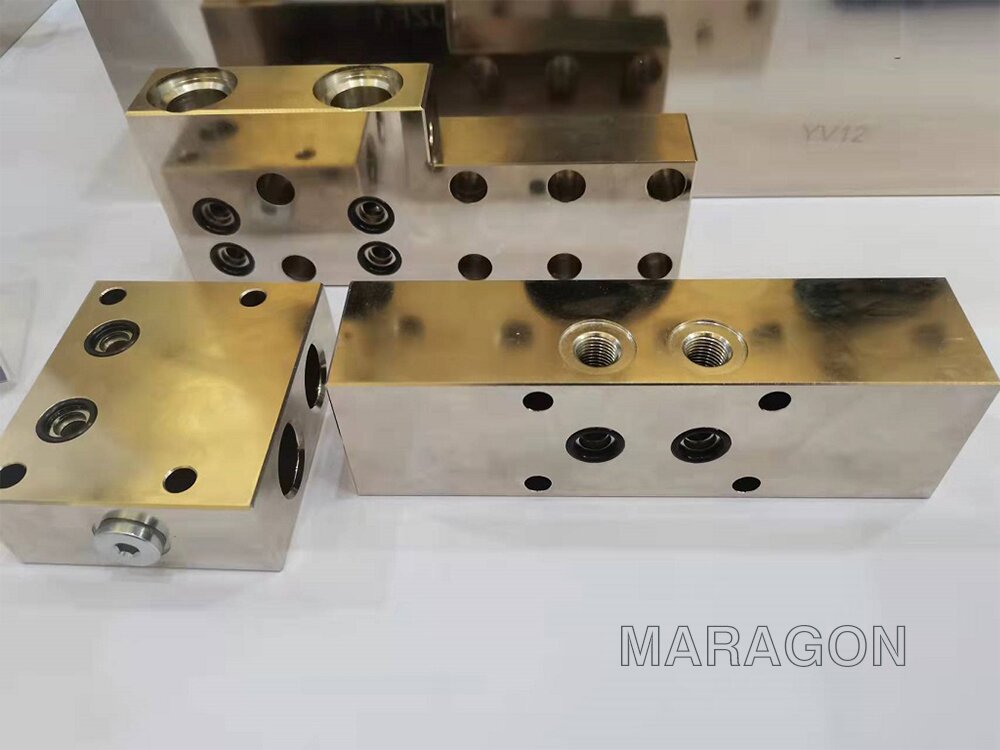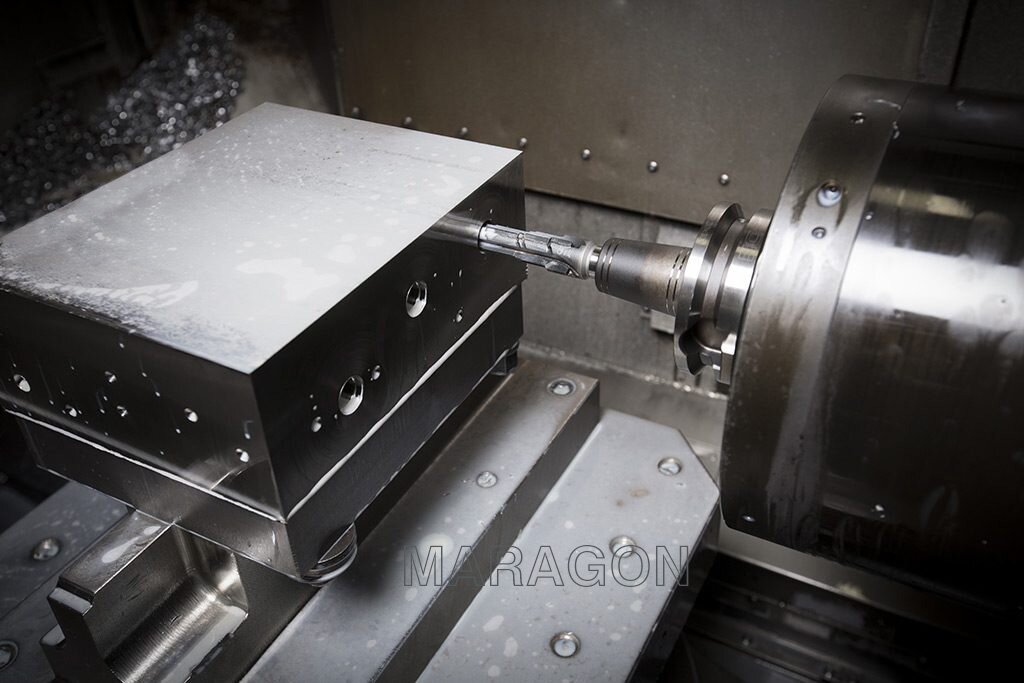1, first of all, hydraulic manifold block processing clamping is more cumbersome, under normal circumstances, processing several sides need to be clamped several times, if there is an oblique hole, at least 1 to 2 clamping processes need to be added, and it is not easy to find the mutual position relationship between the right hole and the hole. Secondly, there are many tools required in the process of manifold blocks processing, and the roughness and tolerance are difficult to meet the requirements of the drawings, and the processing efficiency is often affected.
2. After the machining of the manifold block is completed, the edges and burrs must be removed. All flow channels in the manifold blocks, especially at the intersection of the flow channels, must be completely cleared of all the burrs present, which is closely related to the reliability of the entire hydraulic system and cannot be ignored. However, because the internal pores of the manifold block cannot be seen by the naked eye, or the removal tool cannot reach the burr location, it is extremely difficult to remove the internal hole burrs.
3, roughness requirements are high, the cartridge spool hole in the strict behavior tolerance at the same time, roughness to be below Ra0.8, which makes the processing difficulty of the manifold block cartridge hole increased a lot, the process arrangement and tool selection of the process personnel put forward more demanding requirements.

1, tooling design should be reasonable: the intersecting holes can be placed on the 4-axis CNC machining center for one forming process, so as to reduce the number of workpiece clamping, while solving the angle problem of the oblique hole, do not design multiple sets of angle tooling.
2, For the burr of all the flow channels of the manifold block, many manufacturers currently arrange workers to take the brush or pneumatic grinding head to manually remove all kinds of residual burrs, because the internal aperture of the manifold block can not be seen by the naked eye, so this method is actually not reliable. Of course, there are also some special deburring methods, the following Xiaobian focuses on two, methane blasting method and abrasive grain flow polishing method. The so-called methane blasting method refers to the method of burning methane or hydrogen gas in a pressurized chamber to remove burrs, burrs or hidden contaminants from the processed parts through an oxidation reaction, which is a method of using blasting to generate a large amount of heat energy to remove burrs. The so-called abrasive flow polishing method refers to the purchase of an abrasive fluid polishing machine (Abrasive Flow Machining abbreviated as AFM), which is to grind the surface of the flow channel in the manifold block under the pressure controlled by the abrasive flow polishing machine with an abrasive medium (a polymer flowable elastic mixture with abrasive), so as to deburr, remove flashing, grind rounded corners and other work.
3, the selection of composite tools: composite tools are two or more of the same or not similar hole machining tools combined into one special tool, it can complete drilling, reaming, reaming, countersinking and boring and other processes in a machining process of different process compounding, with high efficiency, high precision. Highly reliable forming characteristics.

The above content is the difficulty and specific solutions of hydraulic manifold blocks manufacturing introduced by Maragon Machinery for everyone, after reading above, do you have a better understanding of this aspect of hydraulic manifold blocks manufacturing? When manufacturing, please be sure to follow these tips!
Contact: Mr. Allen Hu
Phone: +86-18936877650
Tel: +86-25-66082016
Email: sales@maragon-manifolds.com
Add: 181# Jinggu South Street, Jiangning, Nanjing, China
We chat
